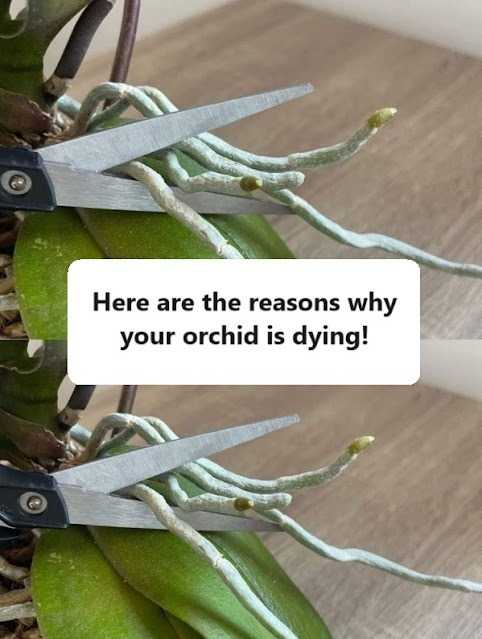ADVERTISEMENT
Here Are the Reasons Why Your Orchid is Dying!
Orchids are stunning plants that can bring elegance and beauty to any home or garden. With their delicate flowers and vibrant colors, they often become a prized part of your indoor plant collection. However, orchids can be quite finicky, and when things go wrong, they can be tricky to revive. If your orchid is looking less than its best or even wilting, you may be wondering, “Why is my orchid dying?”
Don’t worry—you’re not alone. Orchids are known for being a bit more sensitive compared to other houseplants, and several factors can cause them to struggle. Fortunately, understanding the common causes of orchid decline can help you pinpoint what’s going wrong and guide you toward a healthy revival.
In this article, we’ll explore the most common reasons why your orchid might be dying and offer tips on how to fix each issue.
1. Overwatering or Underwatering
One of the most frequent reasons orchids suffer is due to improper watering. Orchids are epiphytes, meaning they grow on trees in their natural habitat and do not require a lot of water like traditional houseplants. Too much water can lead to root rot, while too little water can cause them to dehydrate.
Signs of overwatering: Yellowing leaves, soft or mushy roots, and the plant’s base feeling soggy.
Signs of underwatering: Wrinkled or shriveled leaves, dry and crispy roots, and the plant looking weak.
Solution:
- Water your orchid when the soil is dry, typically every 5-7 days, depending on the humidity in your home.
- Use a well-draining potting mix to allow excess water to escape.
- Always ensure the pot has drainage holes to prevent water from accumulating at the bottom.
- Consider using a moisture meter to monitor the soil moisture levels accurately.
2. Improper Lighting
Orchids thrive in bright, indirect light. If your orchid is receiving too little or too much light, it may not bloom or could begin to show signs of distress.
Signs of too much light: Burnt or scorched leaves, which may appear yellowish or brown.
Signs of too little light: Slow growth, weak stems, and leaves that are darker than usual.
Solution:
- Place your orchid near a window where it can receive indirect light, such as an east-facing window.
- If you only have access to direct sunlight, consider using a sheer curtain to diffuse the light and prevent it from becoming too harsh.
- Grow lights designed for orchids can also provide a good alternative if natural light is insufficient.
3. Temperature Stress
Orchids are very sensitive to temperature fluctuations. They prefer temperatures between 65-75°F (18-24°C) during the day and slightly cooler at night. If your orchid is exposed to drafts, extreme heat, or sudden temperature changes, it can cause stress that impacts its health.
Signs of temperature stress: Drooping or curling leaves, stunted growth, and the plant failing to bloom.
Solution:
- Keep your orchid in a room with stable, moderate temperatures, away from air conditioners, heaters, and open windows.
- Avoid placing the orchid near a radiator, or in the path of hot or cold air.
- Orchids also enjoy humidity—aim for 40-60% humidity, which can be achieved with a humidity tray or a room humidifier.
4. Poor Air Circulation
While orchids need humidity, they also require good air circulation to thrive. Stale air can promote fungal and bacterial growth, which can lead to root rot and other problems.
Signs of poor air circulation: Leaves turning yellow or spots developing, and an overall decline in plant health.
For Complete Cooking STEPS Please Head On Over To Next Page Or Open button (>) and don’t forget to SHARE with your Facebook friends
ADVERTISEMENT
